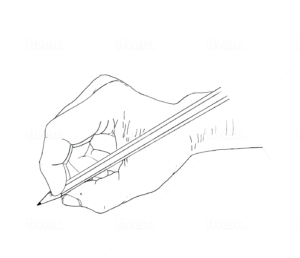 The Influence of Pencil Grasp on Handwriting Skills
The Influence of Pencil Grasp on Handwriting Skills
Patricia Crocker, OTR/L, M.ED
Handwriting is an important skill that plays a vital role in the development of language, literacy, and cognitive abilities in children. The pencil grasp, or the way in which a child holds a writing tool, has been shown to have a significant impact on handwriting skills. In this blog entry, we will explore the influence of pencil grasp on handwriting skills and provide references to research studies that support this notion.
The pencil grasp is the way in which a child holds a writing tool, such as a pencil or pen, to produce written language. The development of a functional pencil grasp is important for the acquisition of legible and efficient handwriting skills. Research studies have shown that a mature pencil grasp, which involves holding the writing tool with the tips of the thumb, index finger, and middle finger, leads to improved handwriting speed, accuracy, and endurance (Feder & Majnemer, 2007).
The relationship between pencil grasp and handwriting skills has been studied extensively in the literature. One study found that children with immature pencil grasps had significantly poorer handwriting skills than those with mature grasps (Schwellnus et al., 2013). Another study reported that children who received instruction on how to improve their pencil grasp showed significant improvements in their handwriting skills (Engel-Yeger et al., 2011).
It is important to note that there is no one "correct" pencil grasp. However, research has shown that a mature pencil grasp, which involves holding the writing tool with the tips of the thumb, index finger, and middle finger, is associated with improved handwriting skills. It is also important to consider the individual needs and abilities of each child when assessing and addressing their pencil grasp and handwriting skills.
In conclusion, the pencil grasp plays a significant role in the development of handwriting skills. A mature pencil grasp has been shown to lead to improved handwriting speed, accuracy, and endurance. Research studies support the notion that instruction on how to improve pencil grasp can lead to improvements in handwriting skills. Therefore, it is important for educators and parents to recognize the importance of a functional pencil grasp and provide appropriate instruction and support to help children develop this skill. If you have concerns about a student's pencil grasp, check with an Occupational Therapist.
References:
Engel-Yeger, B., Rosenblum, S., Josman, N., & Lerman-Sagie, T. (2011). Handwriting performance, self-reports, and perceived self-efficacy among children with dysgraphia. Disability and Rehabilitation, 33(9), 757-765.
Feder, K. P., & Majnemer, A. (2007). Handwriting development, competency, and intervention. Developmental Medicine & Child Neurology, 49(4), 312-317.
Schwellnus, H., Carnahan, H., Kushki, A., & Polatajko, H. (2013). Effect of pencil grasp on the speed and legibility of handwriting after a 10-minute copy task in Grade 4 children. American Journal of Occupational Therapy, 67(2), 218-225.
